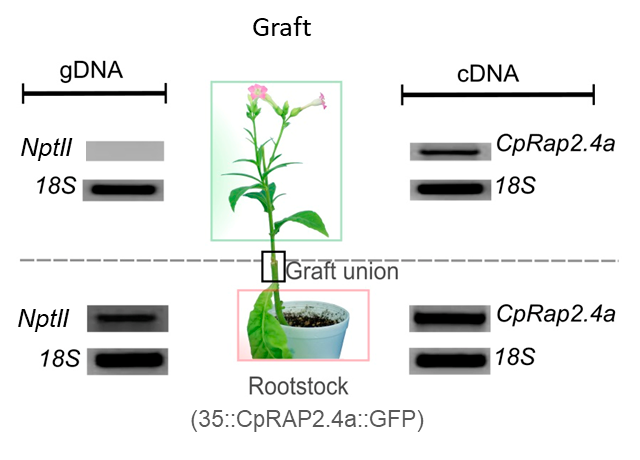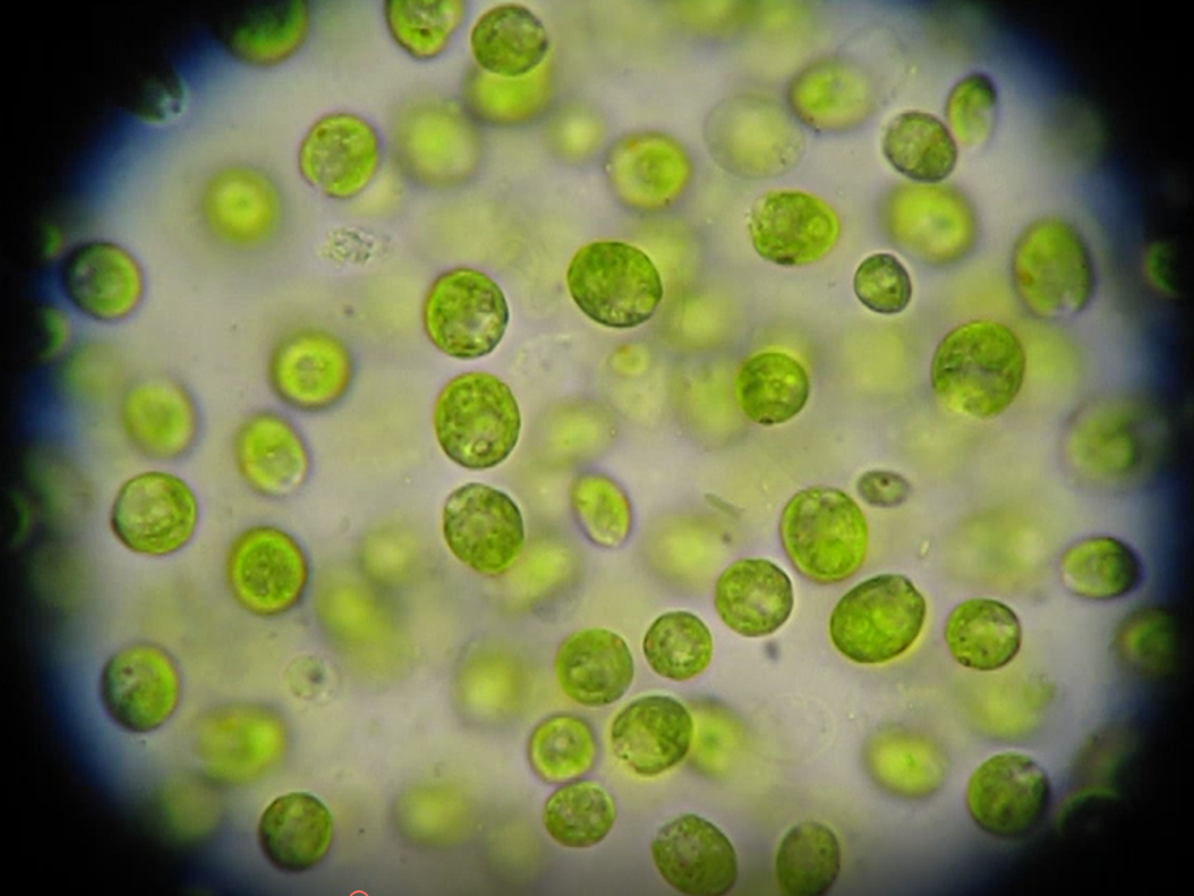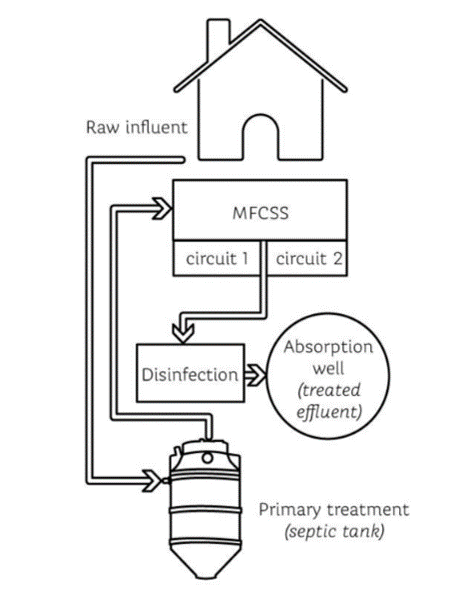
Genes to increase the tolerance of crops to extreme temperatures
Description
Development of genes that confer tolerance to extreme temperatures, as well as the creation of genetics transformation methods for the overexpression of said genes in plants. This method also provides the alternative of generating non-transformed grafts that present such tolerance.
Background
The agricultural sector in Mexico and other parts of the world have suffered the effects of climate change, one of them being the temperature fluctuations. Extreme temperatures can produce diverse physiological and structural changes in plants, with a plethora of adverse effects, for example: more susceptibility to pest attacks. This problem has led to the adoption of different strategies in order to ensure a good crop production.

Many of these strategies turn out to be costly, adding to the related costs of production, (given that hyperinflation and international conflicts have contributed to increasing the prices of agricultural products, compared to the increase in fertilizers and pesticides), as the construction of greenhouses and controlled temperatures, or the implementation of modern irrigation infrastructure for large tracts of land. Given this scenario, biotechnological solutions present a new possibility to face this problem, through the use of genes that confer abiotic and biotic tolerance in plants, thus contributing to increase productive performance and reduce the price of products to the final consumer.
Advantages
a) This technology allows to generate resistant plants that can show a tolerance to extreme temperatures, up to 12 days at 40 °C, or up to 30 days at 4°C. b) This technology is an attractive option, even for those territories where genetically modified organisms have limited acceptance, since it allows the obtaining of grafts whose products such as flowers and fruits will not be transgenic.
Market potential/Applications
According to FAO, the Food and Agriculture Organization of the United Nations, the world population will exceed of nine billion people by the year 2050, resulting in the rapid increase of 60 to 70% at the demand for agricultural products. This increase in demand is attributed to the global decline in crop yield, as started by the Frontiers in Sustainable Food Systems in the year 2021. According to their findings, this decrease in the global crop yield, is expected to continue throughoat the century, a phenomenan directly linked to the global climate change. The proposed technology has potential application in plants susceptible to extreme temperatures, as well as in those crops of comercial importance (papaya,tobacco and others) that are cultivated in regions that have presented adverse temperature changes and face geographical limitations.
Intellectual property
Mx/a/2021/001602; MX 385847 B; US 2021/0087235A1, US 2021/17459034; BR112019000289 A2. HTML Format
Inventors
- Luis Carlos Rodríguez Zapata. HTML Format
- Luis Joel Figueroa Yañez
- Alejandro Pereira Santana
- Enrique Castaño De La Serna
Biotechnological tool for the controlled production of recombinant proteins in algae
Description
Biotechnological tool for the production of recombinant proteins of social and economic interest, consisting of a salt-inducible promoter (e.g. NaCl) isolated from the green microalgae Chlamydomonas reinhardtii.
Background
Two of the most important factors for the efficient production of recombinant proteins are the system used for the producction (it could be bacteria, algae, plant or cell cultures) and the promoter used to induce expression. In this regard, it should be noted that the cultivation of C. reinhardtii has been considered an attractive system for the production of such proteins, since its cultivation is easy, its growth rate is fast and it presents feasibility of gene manipulation.

Another determining factor is the promoter used to carry out the expression of RPs, the inducible promoters are very relevant in the industry because you can have more control over the expression of proteins (up to now the most widely used in this alga is the constitutive promoter HSP70A/RBCS2) hence, an inducible promoter isolated from this microalga, such as the one described in the present technology, it is even more attractive to the industry. This is also a nuclear promoter, which is ideal for the production of complex proteins such as therapeutic proteins or others that require post-translational modifications and that cannot be produced in other widely used systems such as bacteria.
Advantages
Regarding the inducible promoter
- It allows to control the moment when the recombinant proteins begin to be produced, resulting in better yields of these proteins, it works like a switch.
- Use a chemical inducer like NaCl, which is accessible and low cost, which contributes to the low-cost production of recombinant proteins.
- The inducer is added to the cultivation medium once the microalgae has reached sufficient biomass, then start the production.
Regarding the expression system used
- The cultivation of the green microalgae C. reinhardtii offers additional benefits (with respect to other systems or models used) such as:
- higher yields in less time
- lower production costs (up to four orders of magnitude compared to mammalian cells) and,
- the possibility of performing the culture in closed spaces (photobioreactors).
Among the benefits offered by the technology,
Market potential/Applications
The technology here proposed, is ideal for diverse industrial applications, as in the pharmaceutical industry for the production of treatments and vaccines, in the food sector, energy and textile, because proteins of diverse nature can be obtained efficiently and economically by using this tool, including antibodies and enzymes.
Given the potential of this technology, the inducible promoter is currently also being evaluated in the Biotechnology department of CICY, for the production of proteins of great interest, such is the case of a vaccine and an antibody (nanobody) to combat the COVID-19 disease.
Intellectual property
MX/a/2018/015859 ; EPO EP19897672.2. HTML Format
Inventors
- Virginia Aurora Herrera Valencia. Formato HTML,
- Santy Peraza Echeverría. Formato HTML y
- Anayely Guadalupe Beltrán Aguilar.
Electronic circuit for harvesting energy from ultra-low power sources
Description
This technology consists of an electronic circuit that, due its configuration, not only harvest energy generated by ultra-low power sources, but also stores, amplifies and transfers it efficiently, in such a way that makes possible its maximum use and its potential application in industrial conditions, such as transport, commercial or domestic.
This technology consists of an electronic circuit that, due to its configuration, not only collects the energy generated by ultra-low power sources, but also stores, amplifies and transfers it an efficiency way, to make it useful, in this way it is possible to achieve maximum utilization and a potential application in industry, commerce or the domestic environment.
Background
The technologies for harvesting energy from ultra-low power sources are emerging and they are focused on sources of energy very specific as thermoelectrics and microbial, they are limited in their range of operation and output power due to the problem of connecting different sources of energy of ultra-low power in parallel configuration with a capacitor, since the behaviors of the different sources varies in voltage amplitude, oscillation frequency, and energy density (Harb, 2011). Given the above, it is difficult to integrate the harvested energy for conventional use.

Advantages
- The circuit configuration allows the transfer of the energy harvested to a central 12 V battery, turning it into available energy sources for different industrial conditions.
- Energy can be harvested from different sources such as mechanical vibrations, thermogenerators, electromagnetic radiofrequencies, solar, biological, among others.
- The energy can be used in systems that involve current inverters with a nominal input of 12 V in direct current and that transforms it into alternating current, which allows powering a wide range of electrical and electronic devices.
Market potential/Applications
According to data from S&P Global Ratings (2022), electricity demand has already exceeded pre-pandemic levels in most major Latin American economies in 2021, and should grow at or slightly above our growth expectations of GDP, which are 2.0% in 2022 and 2.3% in 2023. Most of the additional generation capacity in Latin America comes from non-conventional renewable energies; The growing demand for renewable energy in the public, private and political sectors has prompted electricity service companies not only to expand their renewable energy portfolios, but also to lead energy independence through the integration of ecological, sustainable and scalable technologies for future generations in the long term (eldinero.com.do, 2022).Some ultra-low power energy sources include mechanical vibrations, electromagnetic radio frequencies, pressure gradients, temperature gradients, solar and biological, among others linked to renewable energies (Harb, 2011). Due the current situation, this technology represents an alternative for harnnesing of the ultra low energy, the configuration of the circuit here proposed allows its use in electrical and/or electronic devices (such as LEDs, transmitters, central batteries, etc.)
Intellectual property
MX 374146 B; US 10734822 B2; NC2018/0005212 ; CL2018001401; BR112018003155 A2; PE 580-2018 . HTML Format
Inventors
- Liliana Alzate Gaviria. Formato HTML,
- Jorge Arturo Domínguez Maldonado,
- Francisco Javier del Río Rivera,
- Manuel Israel Flota Bañuelos y
- Gerardo Raymundo Cámara Chalé.
- Oficina de Transferencia de Tecnología
- Correo electrónico: This email address is being protected from spambots. You need JavaScript enabled to view it.
- Teléfono: (999) 9428330 ext. 349
